This Week At Angama #4
2 March 2018 | This Week at Angama | Adam Bannister
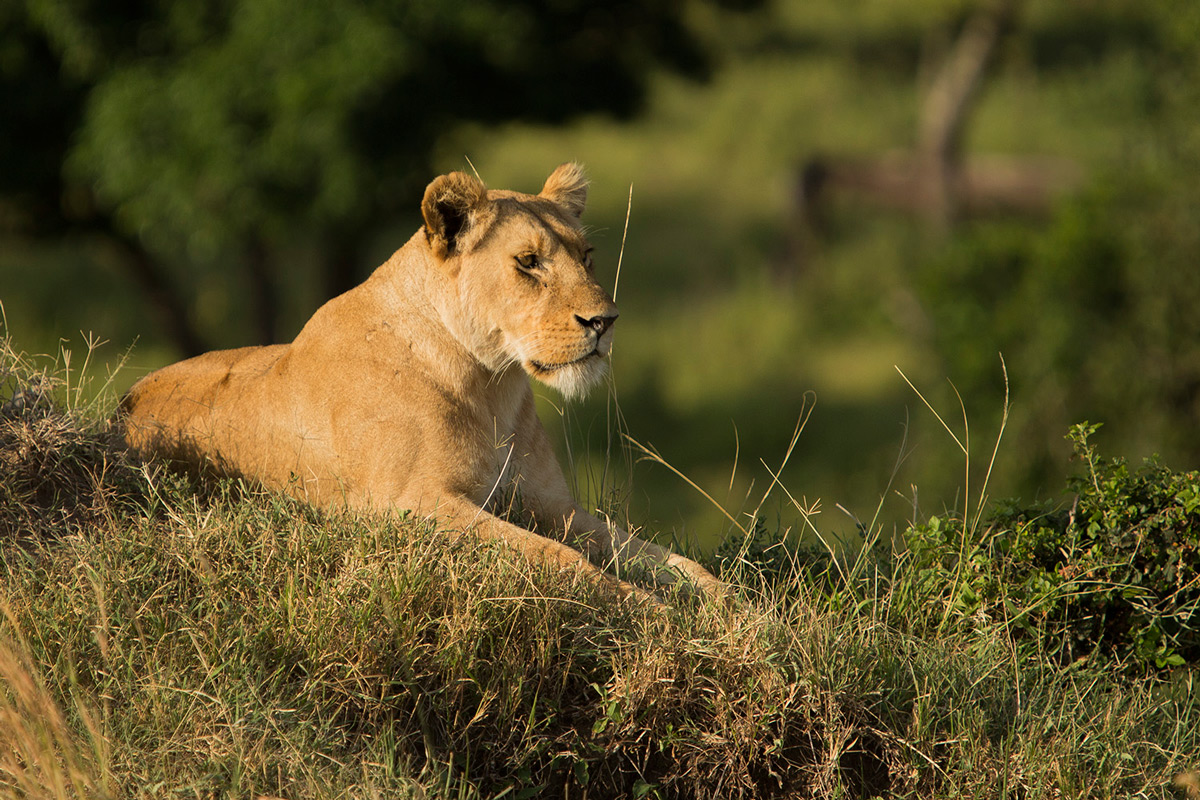
One of the most difficult but rewarding aspects of photography is what I call sequence photography: capturing a story that is unfolding and being fast enough to pre-empt what may happen next – visual storytelling at its best. When guests ask for advice on how to improve their wildlife photography my reply usually surprises them: “Be pre-emptive and if you think a situation may develop quickly then set your camera up with that in mind – not always on what you are seeing at that exact time.”
Let me explain what I mean by using a series of photographs I took of the Angama lion pride this week. We came across a young male and a female enjoying the early morning sun directly below camp. The light was rich and warm and the lions seemed content to sleep, occasionally looking around. I set my camera to get a shallow depth of field and a low ISO. I wasn’t too concerned about the shutter speed as there was next to no movement. Dozing lions … you know the story. [f 4.0, 1/640, ISO 250, +0.33]

The lioness suddenly looked up and I knew that she had spotted something and that I needed to change my settings to get an emphasis on a fast shutter speed. The reason? If she started to hunt it would happen in the blink of an eye and I didn’t want to miss the action by fumbling around on the camera. I dropped the F-stop (increased the aperture) to ensure a fast shutter speed. [f 2.8, 1/2500, ISO 250, -0.33]

Not even a second after I had changed my settings and the lioness sprang into action. [f 2.8, 1/3200, ISO 250]
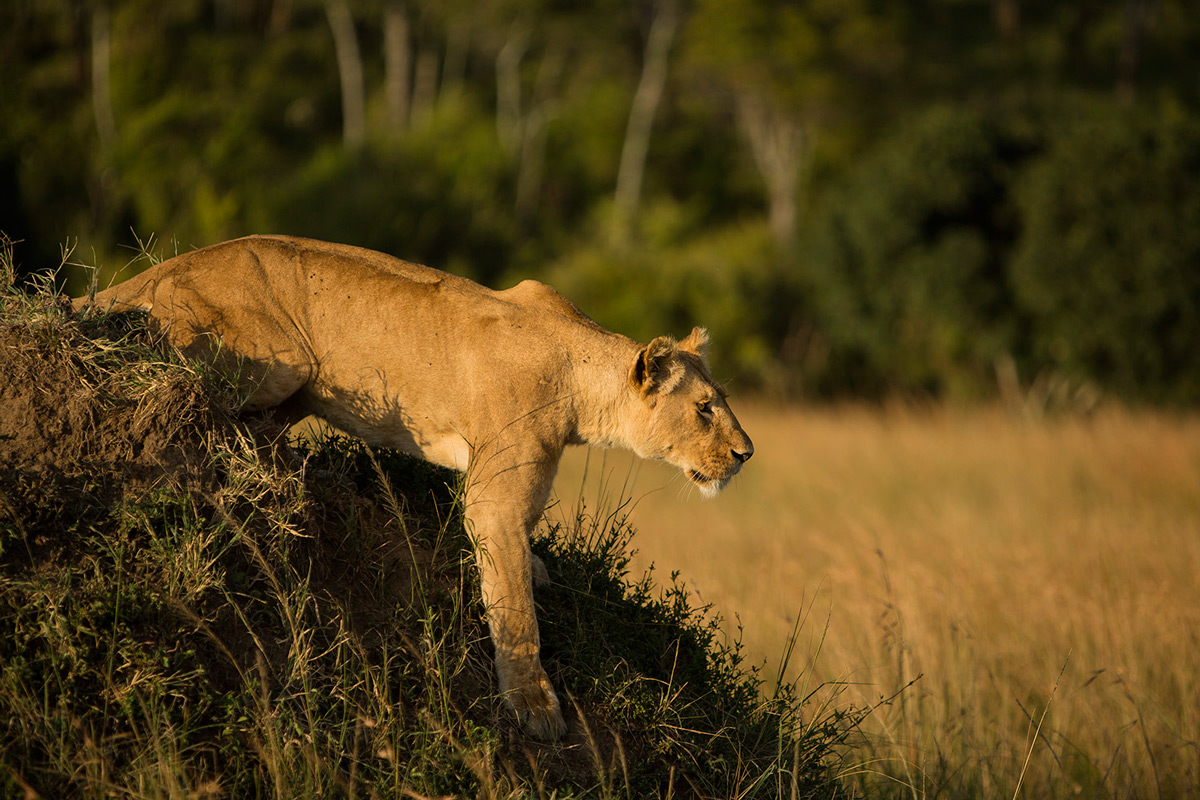
As she came down the mound I changed my Auto Focus to Continuous or AI Servo to set up for a chase with a lot of movement. [f 2.8, 1/2000, ISO 250]
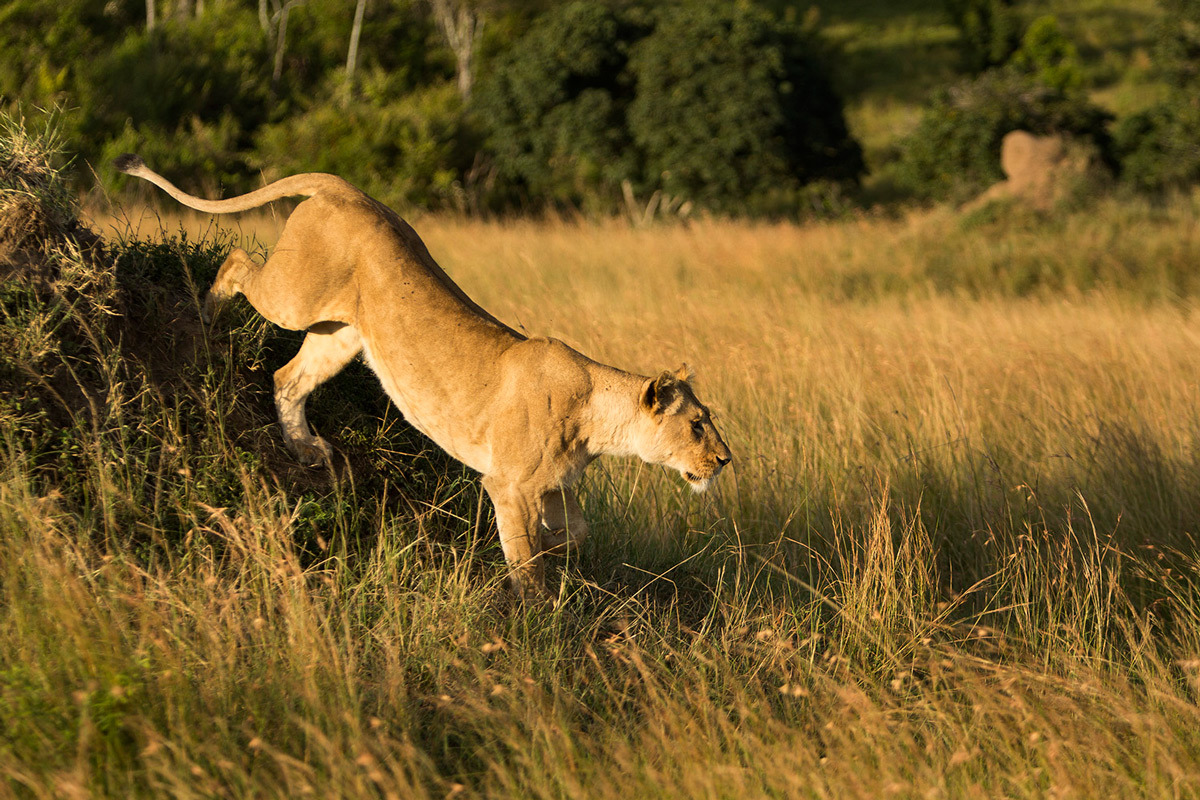
The shutter speed had reduced a fraction and I wanted to get it back up so I increased the ISO ever so slightly. [f 2.8, 1/4000, ISO 320]
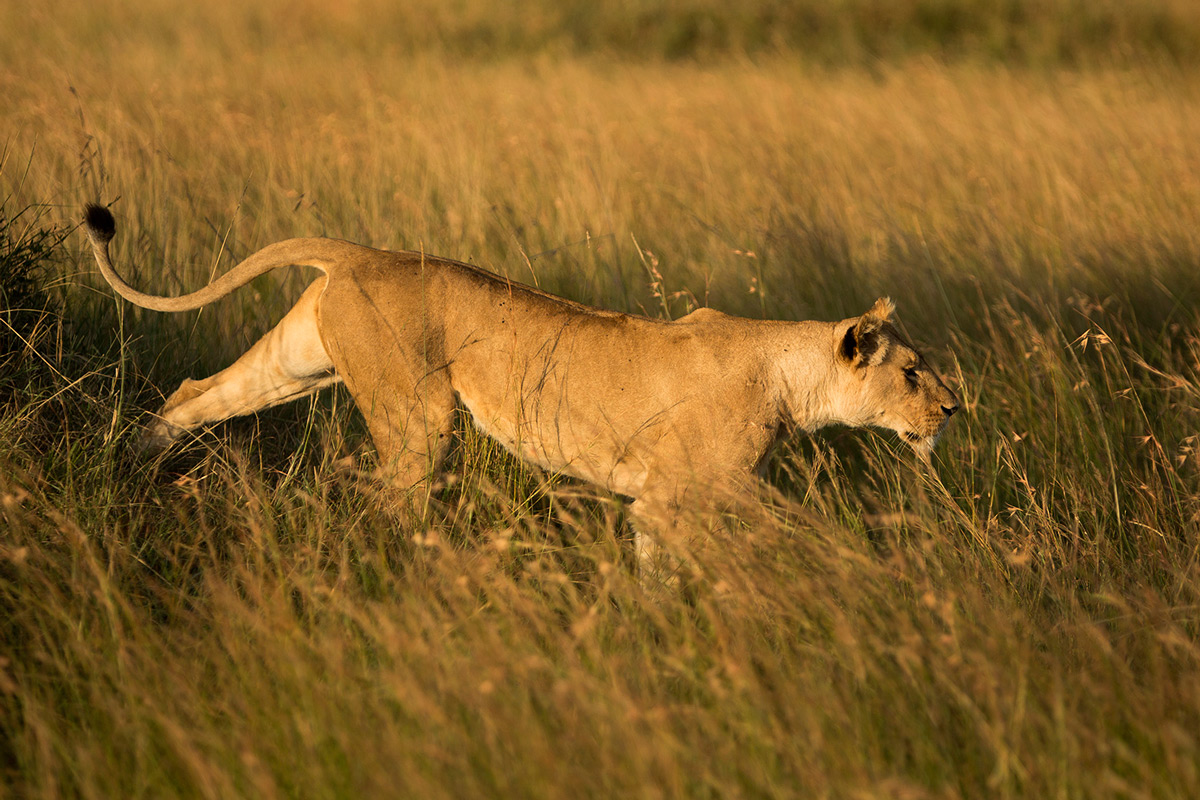
The lioness moved down into the grass – my shutter speed was just right. I knew that the hardest part was that with a wide aperture it would be very hard to focus if a chase occurred, but at least I knew my camera would be fast enough to get the action. I knew I was taking a risk, but I was happy with this. Sadly, (for the lions anyway) the approaching warthog sensed something was wrong and raced off leaving the two lions gazing out. I may not have got the chase this time, but at least I knew the camera was correctly set up. [f 2.8, 1/3200, ISO 250]

A wonderful moment then occurred when out of nowhere heads of lions started to pop up from all over the grassy landscape. For literally half an hour we had been watching just two lions, oblivious to the fact that we were in the midst of 15. Only in the Mara. [f 4.0, 1/2500, ISO 320, +0.33]
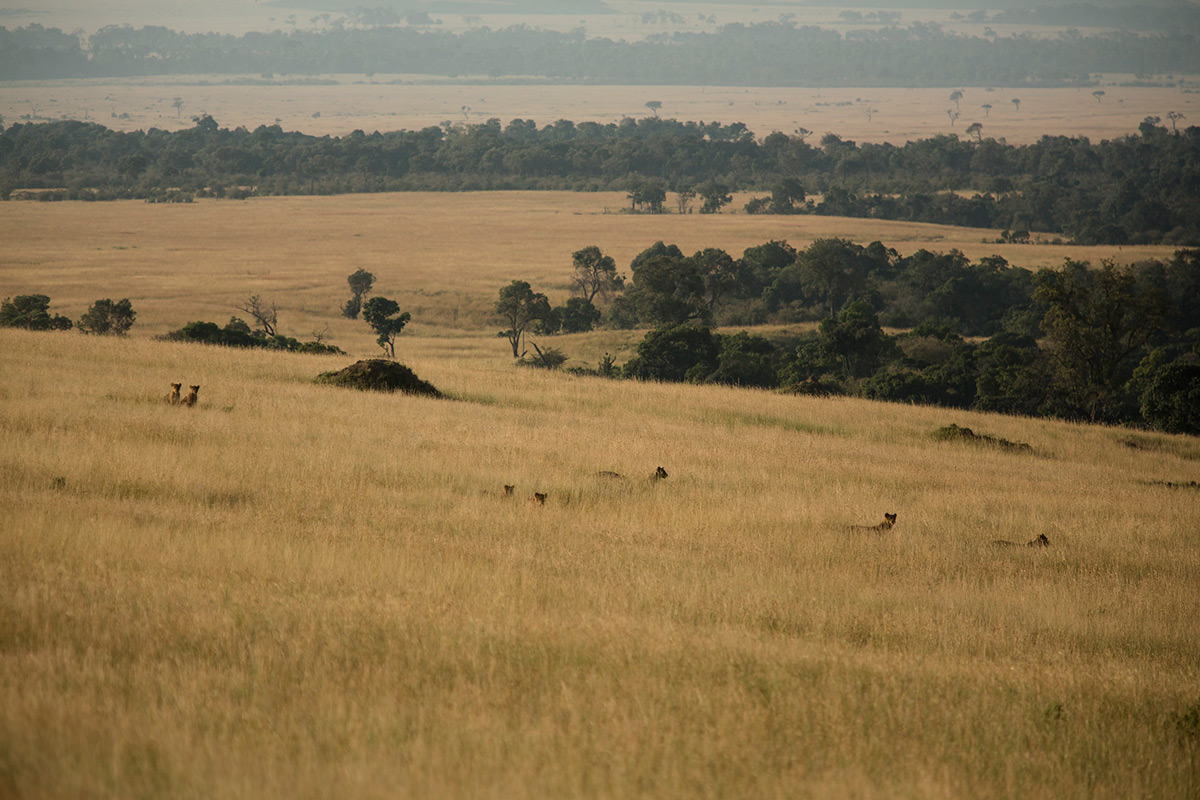
Here is another sequence of shots that I captured this week. When shown together they show a rather fun and unusual scene of a Black-headed Heron killing and eating an unidentified snake. The most tricky shot was the first in-flight frame. To get a flying bird in focus you need a very fast shutter speed (over 1/4000) and I have found overexposing makes it all that much better. [f 4.0, 1/8000, ISO 640, +0.67]
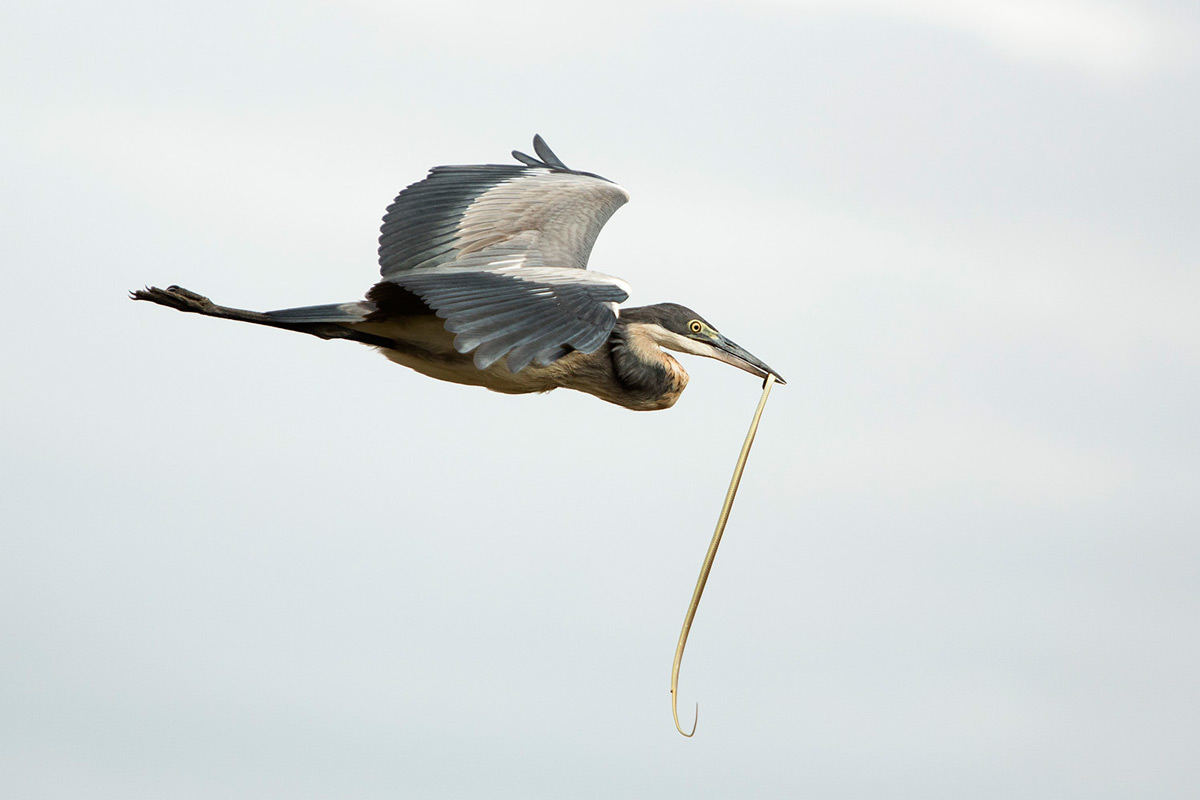
Once the bird had landed I quickly readjusted my settings bringing the shutter speed down by decreasing the aperture and ISO allowing me to capture the story of the Heron and the Snake. [f 5.0, 1/1600, ISO 400] and [f 5.0, 1/1600, ISO 400, +0.33]
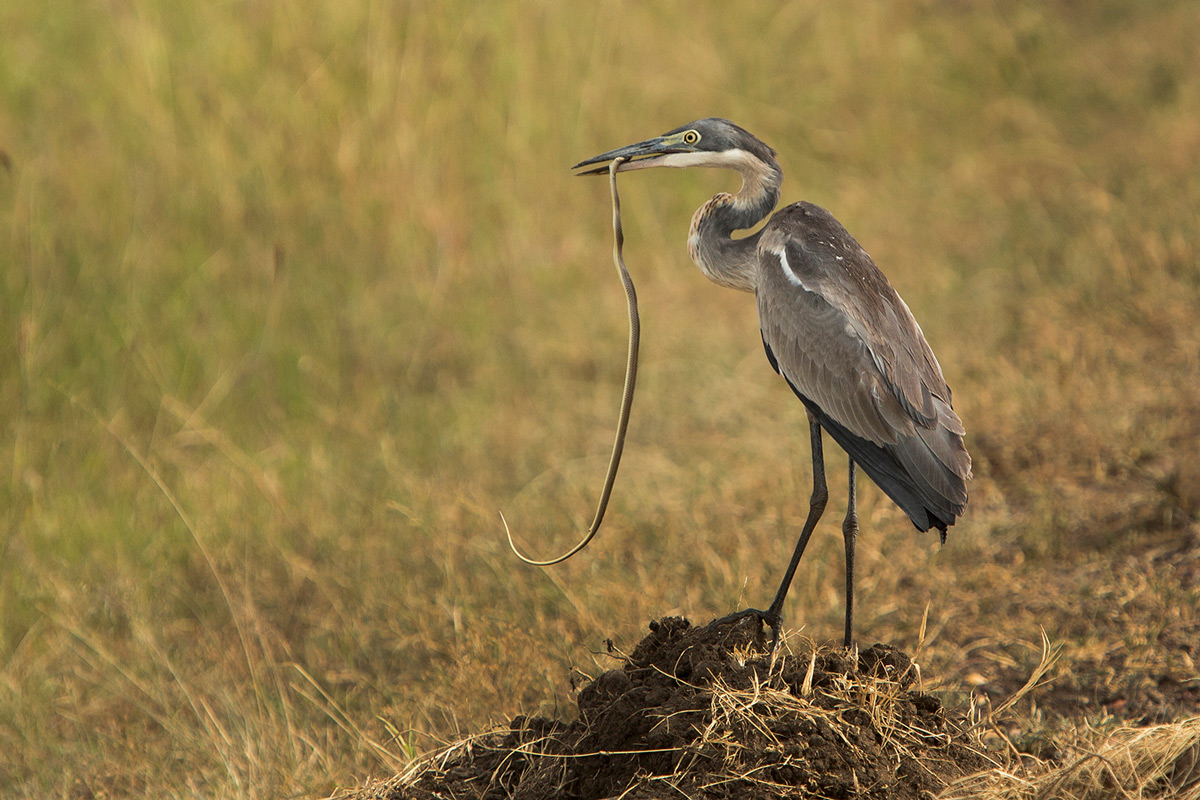

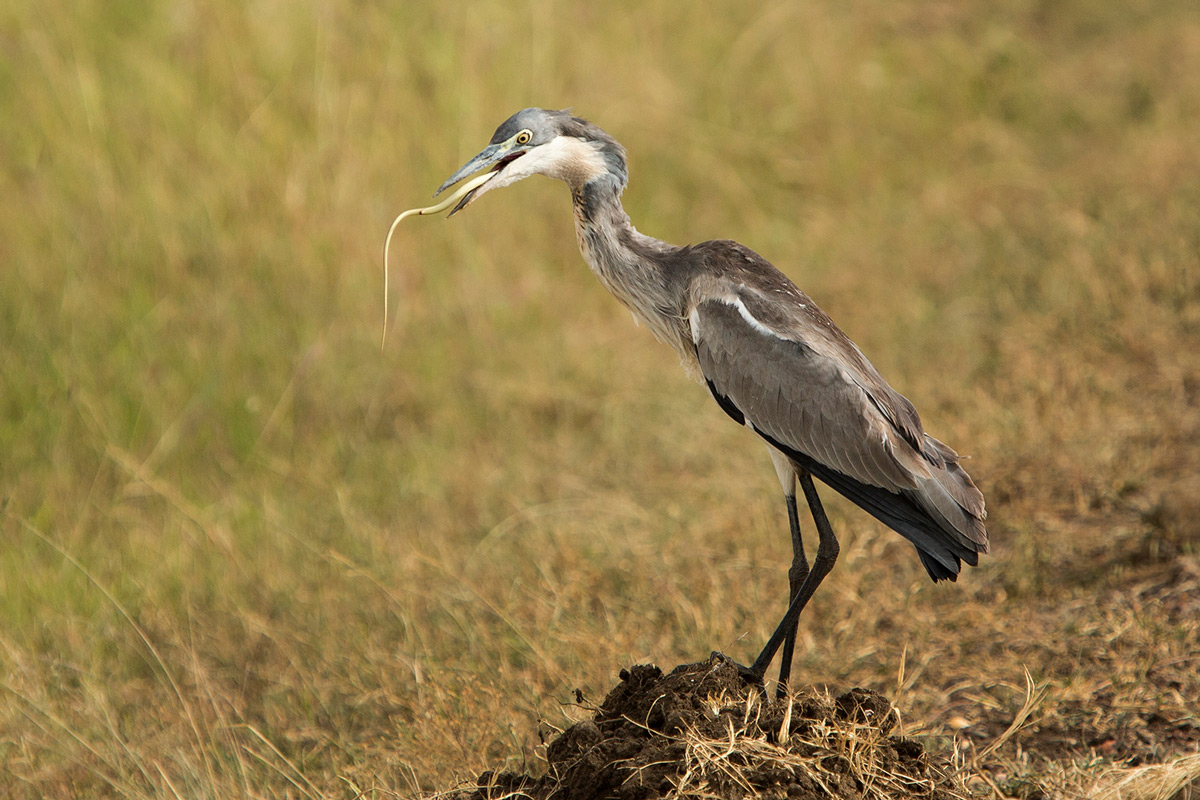

This Week At Angama’s purpose is not only assist people’s understanding of photography, but also to communicate what is happening in the Mara. Here you can see how dry the Mara River is. We all cling to the hope that the heavy clouds building in the skies will soon bring much needed rain to the Reserve. [f 5.0, 1/2000, ISO 400]
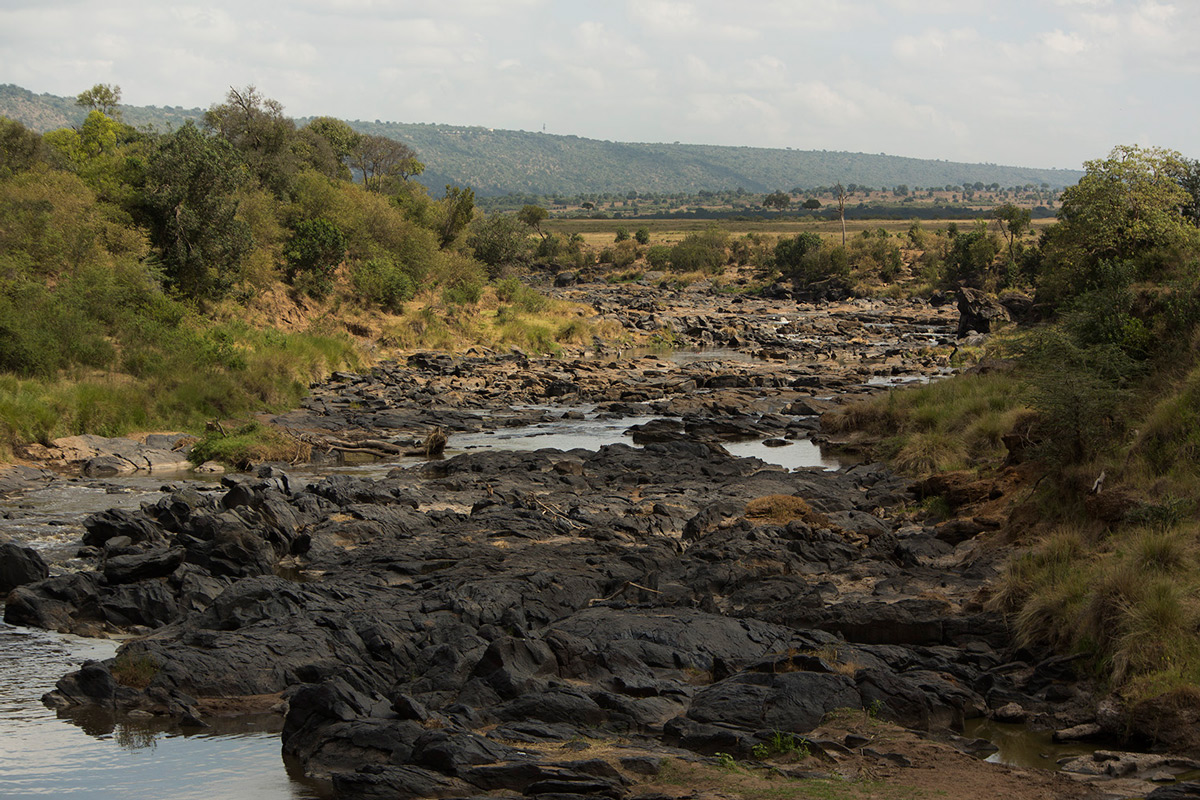
We finish off with a picture that may not be the best technically, but it sure captures an unusual sighting. An immature Verreaux’s Eagle Owl eating a hedgehog… [f 5.0, 1/320, ISO 400, +0.67]
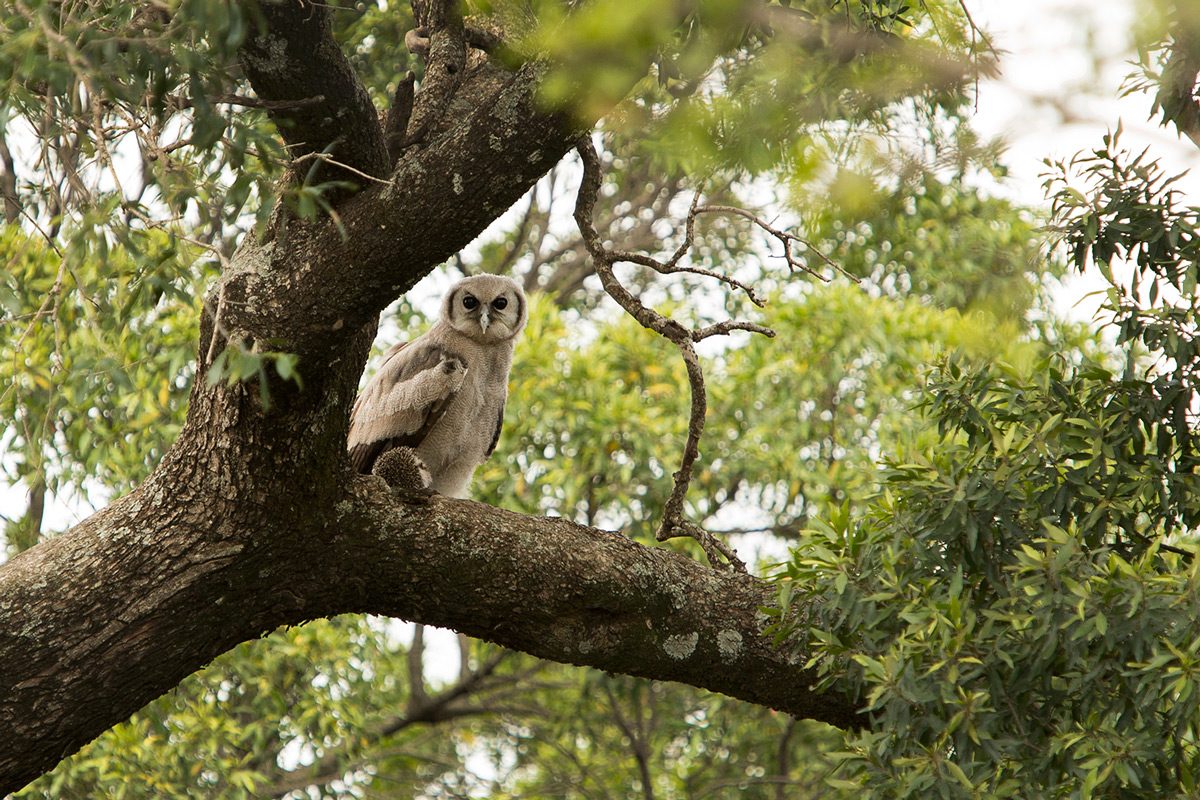
TAGGED WITH: Wildlife, Birdlife, Photography, Maasai Mara, Angama Pride, Mara Triangle, mara river, Wildlife Photography



COMMENTS (1)
James Fitzgerald
March 2, 2018Great post – very instructive – thanks Adam
REPLY